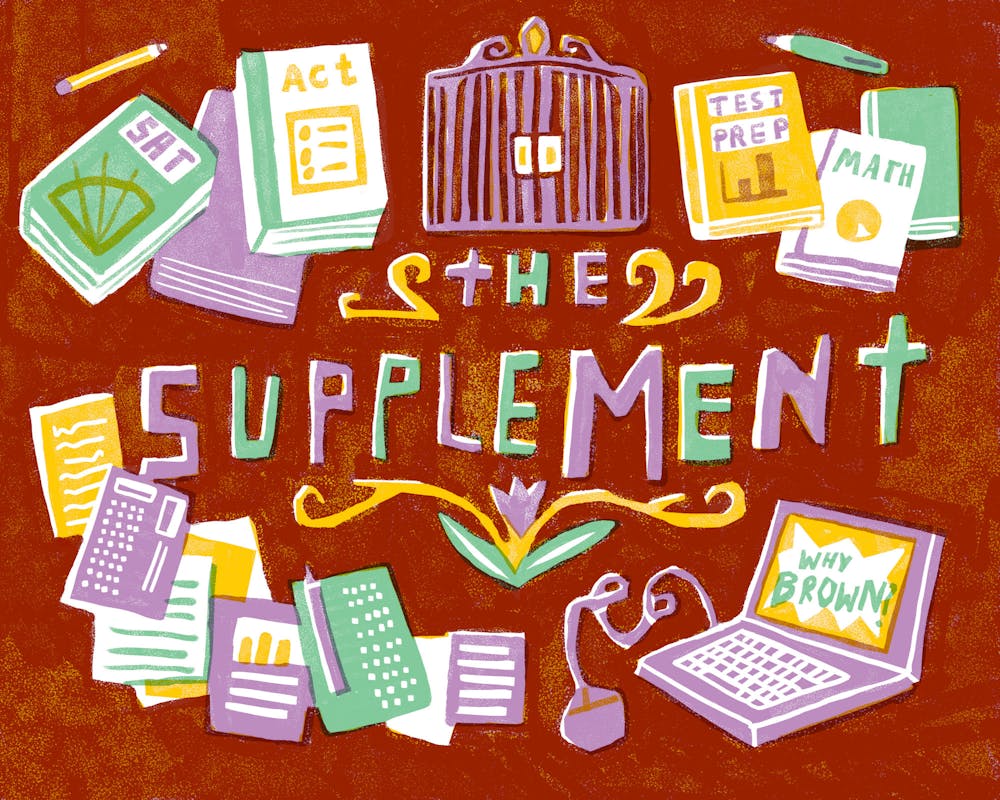The Supplement is a new series and newsletter by The Brown Daily Herald aimed at providing applicants to the University, and their families, with perspectives from students and admission officers on the application process, as well as other admission news. To receive The Supplement in your inbox for the rest of the semester, you can sign up below.
When applicants hit the “submit” button on their Brown application, it presents one of the more daunting — and more relieving — steps of applying to college. For better or worse, it brings an air of finality, a sense that the application is out of your hands.
Christina Miles ’25 said that when she sent in her early decision application to the University last fall, she immediately felt overcome with relief. But she also couldn’t shake a nagging feeling: Had she left something out? Did she misspell something?
Nélari Figueroa ’25 said she submitted her early decision application on her birthday in hopes of adding some luck. She celebrated by repeatedly pressing the Common Application’s confetti button on the confirmation message.
But Figueroa and a number of other first-years interviewed by The Herald said that what occurred between them clicking submit and receiving their decision was something of a mystery to them. Figueroa said she knew “several people” would read her application quickly after she had spent months on it, and at some point, a group of admission officers would decide if she would be admitted. Aidan Hennessey ’25 and Miles said that while they felt like they only knew the broad strokes of the process, they didn’t know much more.
Dhruv Anand ’25 finished his application to the University in November but applied regular decision — meaning he didn’t hear back until March, after “months and months … of slowly building anxiety.”
“Nobody knows what happens once you click the submit button, except for the people behind the scenes,” Anand said. “It felt like I had just thrown it out into the universe, and I was waiting for months for something to happen.”
According to Katrina Souder, an admission officer at the University, nothing dramatic happens the moment applicants click submit. The application will eventually reach the University as one file in a tranche of data sent by the Common App. Staff on the operations side of the Office of Admission then enter the files into the University’s data management system. Once an application is complete with transcripts, letters of recommendation and other school-provided documents, an applicant’s name will drop into an “application queue” — a list of names and high schools — for the admission officer covering the area from which a student applied.
After the first read, the admission officer writes a quick summary of the application, said Bailey DiOrio, another admission officer for the University. Then it gets passed to a second admission officer, so the application can pass through another set of eyes. At the very end of the process, committees consisting of a chair and three to five voting admission officers meet to discuss applications from a given region and decide applicants’ outcomes.
When admission officers read an application, they look at every element, from the transcript to the essay to the optional video introduction. Souder, DiOrio and James Walsh, another admission officer for the University, stressed that no algorithm or rating exists that guarantees an applicant a spot at the University.
Walsh said he starts reading an application by looking at the transcript to establish a “baseline of academic success,” before proceeding to read it cover-to-cover. That process is a chance for him to take some notes and “jot down some feelings on the file.”
Souder said she always starts with school and student context: Learning more about where an applicant went to school, where they’re from and how long their commute was in the morning. She then reads through the rest of the file in order (her favorite parts, she said, are the video introductions, the Brown-specific supplements and teacher recommendations).
The reading process for regular decision starts in January and lasts “well into February,” Walsh said. And according to Souder, some applications aren’t read until the very end of the process, especially if numbers are particularly overwhelming in a given year.
“It is a lot to get through,” DiOrio said. She noted that she usually starts reading in the morning, when she’s most productive, and backloads her meetings later in the day.
When reading season winds down, committee meetings begin, a process Walsh described as admission officers discussing the applications they’re “really excited about” before deciding whether or not an applicant will be admitted. “The process has a human component,” Souder added.
As committee meetings wrap up and the office makes final decisions, admission officers begin checking and double-checking to make sure everything lines up. Applicants, in the meantime, said they waited with varying degrees of anxiety.
“There were many nights when I stayed up and was like, ‘what am I going to do when I get rejected or deferred,’” Miles said.
“You want to talk about it with everyone, but also you don’t want to talk about it,” said Keelin Gaughin ’25, a first-year who applied regular decision. “It was a very anxious two months for sure.”
Hennessey said that knowing the process was out of his hands was enough to keep him from worrying. He even forgot about the application until the few days before the University released notifications.
Some first-years who applied early decision such as Ayaka Ono ’25, said they used the time before they got their decisions to write supplemental essays for different colleges. Miles noted that she survived the wait by commiserating with her friends, while Anand focused on doing what he loved — playing music, running and playing video games — to take his mind off the wait.
In the final days of waiting, many first-years said they felt the anxiety mounting even more. But according to Souder, the Office of Admission is “white-knuckling as hard” as the students are in that time frame — “triple-checking” everything in the applicant portal where decisions are released.
Still, excitement runs through the office the week before decisions go out, Souder and DiOrio said.
“There’s this level of, you know what the Christmas present is under the tree, and you can’t tell anybody,” Souder said. But admission officers also aim to be respectful of the fact that most students won’t get the news they want.
Reflecting on his own college application process, Walsh said: “I didn’t get into my top choice, and I remember thinking, ‘okay, I have to reframe, I’m not getting into my top choice,’ … the bottom line is there are so many qualified applicants in our pool that we’re not able to take.”
The day decisions go out — mid-December for early decision and some time in early spring for regular decision — admission officers reverse roles with first-year applicants. It’s their turn to worry about the moment a button is clicked: the one that releases decisions to students.
“There’s that moment of, ‘oh man, I hope we sent the right decisions to the right students,’” Souder said. “We’re confident that we do, but human nature (kicks in) on that last click.”
DiOrio said that in normal years, admission officers gather in the office and watch the numbers of decisions opened go up.
In early decision, “it’s an early pause for celebration before we dive back in for regular decision,” DiOrio said. “And at the end of regular decision, it’s a really nice moment when the class is fully admitted.”

Will Kubzansky was the 133rd editor-in-chief and president of the Brown Daily Herald. Previously, he served as a University News editor overseeing the admission & financial aid and staff & student labor beats. In his free time, he plays the guitar and soccer — both poorly.





